Turtle Crossing

The common snapping turtle (Chelydra serpentina) belongs to an ancient lineage of turtles. If you could take a time machine back 80 million years ago you would recognize their ancient ancestors as nearly identical to the modern form. Snapping turtles have filled the same ecological niche since they first diverged from other turtles millions of years ago. They are the garbage disposals of freshwater lakes, rivers, and wetlands. They are opportunistic feeders, eating anything plant or animal, dead or alive. I have watched them pluck mallard ducklings from the surface of the water and had them rob a full stringer of fish. They are good at what they do. It is this opportunistic nature that has allowed their continued success over the last 100 million years or so. They survived the meteor impact that took out the dinosaurs and most other complex life. The slow metabolism and opportunistic feeding habits of snapping turtles surely allowed them to survive the apocalypse at the end of the cretaceous.
Snapping turtles get their name from their aggressive nature when on land. Unlike most turtles, snapping turtles cannot retreat into their shell for protection. The bottom of their shell, the plastron, is little more than a skid-plate offering no refuge for limbs, tail or head. To overcome this lack of protection the snapping turtle has an enlarged head and very powerful bite. Alligator snapping turtles have been measured with over 1500lbs per square inch in bite force. That is more than enough pressure to sever digits or inflict severe lacerations.
Instead of hiding in their shells they simply sit and wait for the fight to come to them. A threatened turtle on land will position itself head toward the threat, raising the rear of its shell of the ground. Get too close and SNAP!
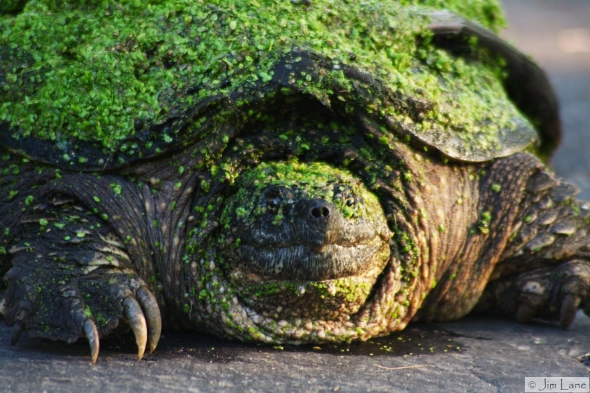
Watching a snapping turtle walk it is easy to image them strolling across a beach covered in dinosaur footprints. There is something primeval about their gait and swagger that airs a confidence that even bipedal apes can appreciate.
Despite their legendary bite and temperament, snapping turtles are quite docile when handled. After a couple of snaps and wiggles, a turtle in hand simply hangs on for the ride. I have helped dozens of snapping turtle (and other species) cross the road. The safest way to pick up a snapping turtle is to grab the carapace (top half of the shell) just behind the hind legs. Get a firm grip and expect some claws to try to scratch you off. This grip will be out of range of the bite despite the turtles best efforts.
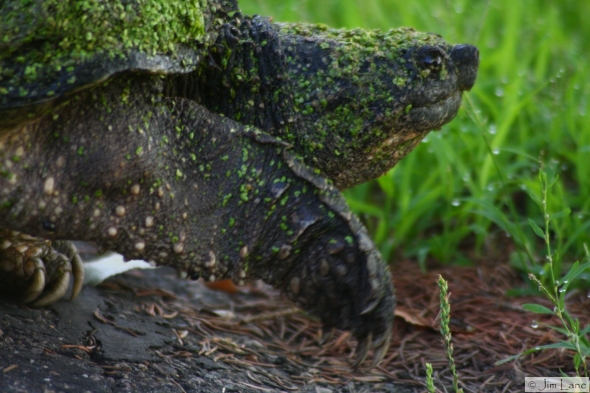
Snapping turtles have changed very little from the time of the dinosaurs. There have not been any significant environmental pressures to affect change and they keep on doing what they’re doing. They serve an important role in the freshwater ecosystems of the Eastern United States. Provided compassionate and educated humans can help them across the road and give them a place to live I’m sure they will continue to thrive for millions of years to come.
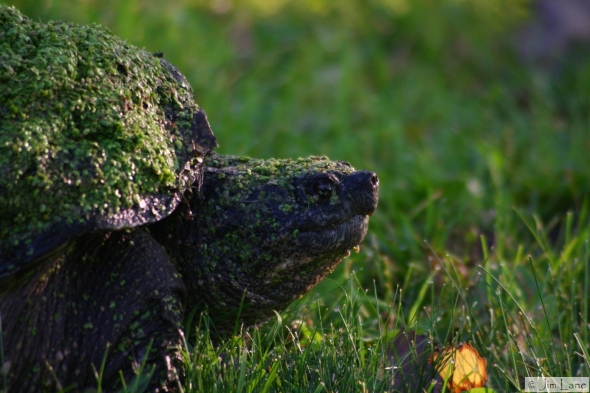
Fawning Over Deer

Deer. To a “country” person they are the competition; eating crops, flowers and anything else that might be tasty. To a “city” person they are novel animal to be admired with wonder and curiosity. Where I live, on the edge of suburbia, we have members of both camps. We have the gardeners who support the multi-million dollar industry of deer repellents and the hunters who see a nice cut of venison. I have seen people who live just houses away oggle at the deer as if they are some sort of rarity when they are in their yards nearly every day.
This seeming lack of awareness of the natural world is a by-product of our increasing need for convenience and the false sense of the world that comes with it. When the world is hyper-organized down to the minute and instant gratification controls our brains we lose the ability to stop and listen, to be aware of the world around. Many times I have watched as three or four deer stand within 25 feet of a person walking on the road, completely oblivious to the deer. They are too preoccupied with their phone, music or simply putting one foot in front of the other. Undoubtedly, this same person is the one who is amazed when they see DEER in the neighborhood. Awareness requires the ability to break the cycle of convenience and realize that the world is the way it is, not for our convenience, but for itself.
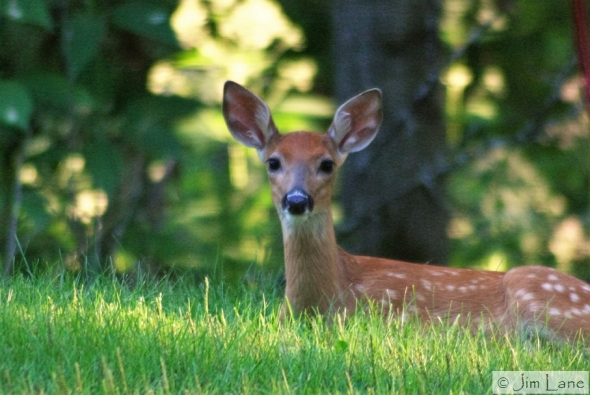
I am privileged to live in a house with about 4 acres of land surrounded by suburban sprawl. My property is an oasis for the local wildlife. Our land has become an ideal location for the local deer herd to raise their fawns. We have two resident does, one with twins and one with a single fawn. We get to watch these fawns as they grow from wobbly legged infants to fool-hardy adolescents to sub-adults getting kicked out of the home range by their moms. We regularly watch as they run laps around our yard, chasing each other as they practice the manuvers to evade predators.
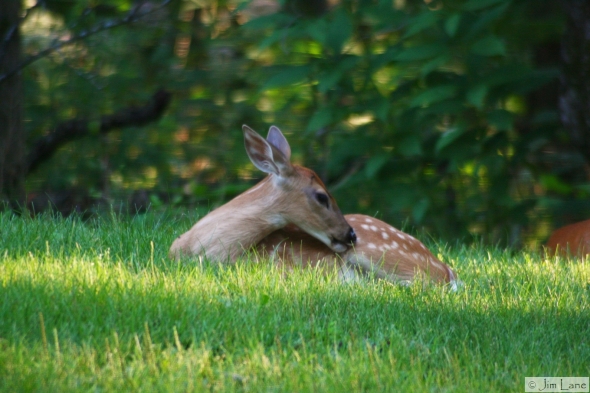
When playing the does seem just as apathetic as moms at the park on their cell phones. They are there but don’t really seem to care what the kids are up to as long as there isn’t any screaming or crying.
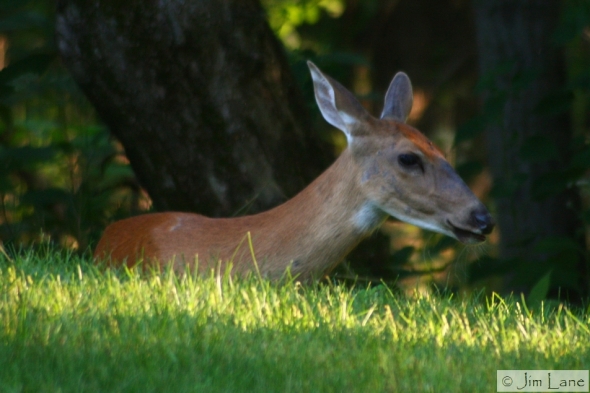
The doe watching the fawns play
Together these fawns grow up in a very different world than some of their relatives. They live in an artificial world where a car is their primary predator, where food is abundant and the snow doesnt stay deep in the winter. These deer are well fed and tolerant of humans and their habits.
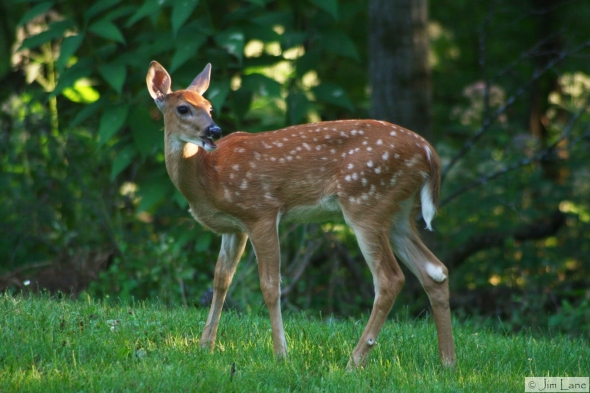
There is a never ending battle with the deer to grow any kind of flower or vegetable. This summer has been the first time in three years we actually have hostas on our property. The previous two year the deer have mowed them down to the ground. They have broken our fence around the vegetable garden and decimated a crop of tomatoes, swash and broccoli. Even with all these negative I must realize that they, like me, are just trying to survive. I have the luxury of growing food more for recreation than neccesity while the deer, on the other hand, have winter to prepare for.
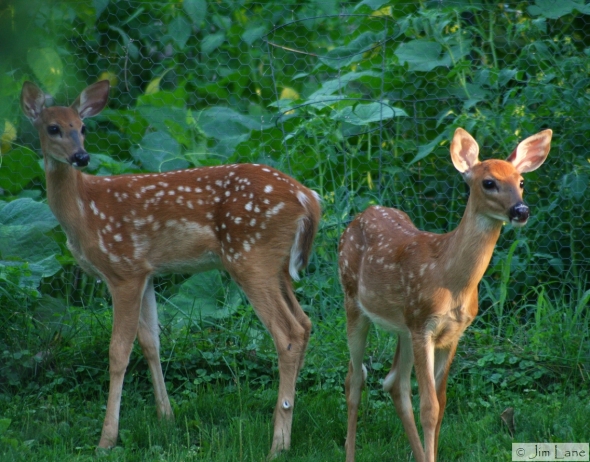
The more I watch the deer the more I am reminded of just how good we humans have it. How priviledge we are to take the very basic needs of life for granted. We can complain about trivial things and never have to think about more than “what we want for dinner”. By taking the very needs of life for granted we have lost our awareness of their importance. We don’t think about where our water or food comes from as long as it comes. We don’t question the strength of the wi-fi or the temperature on the thermostat as long as it’s there. Our conviences have numbed us to the reality of the natural world. I envy the deer and other animals for they must take nothing for granted and must have gratitude for every sunrise they get to see.
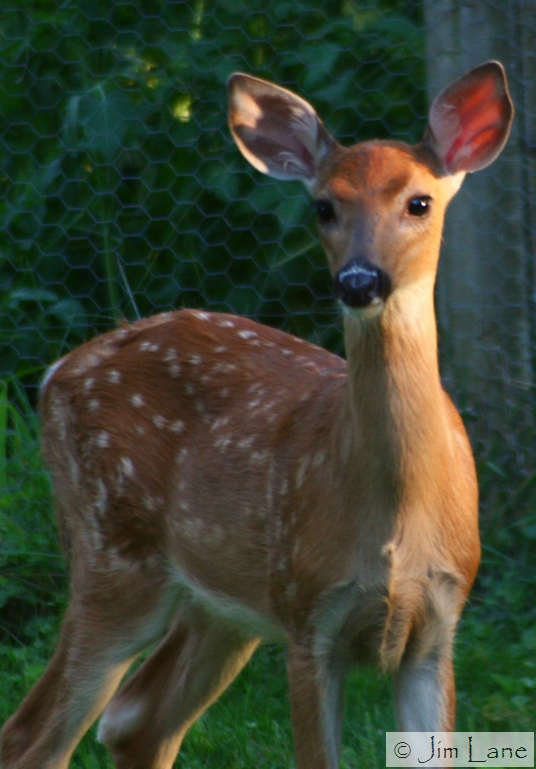
Portrait of a Marmot

Marmots, rock chuck, whistle pig, whatever you want to call it they are the largest members of the squirrel family here in North America. Like their close relatives the groundhog (also called a woodchuck) marmots are ground dwelling. Unlike their close relatives, marmots live in the mountainous regions of North America. Living in an amongst the rock slides and scree fields in and around mountains. Marmots live in loose family groups where each member looks out for the other members. The first sight of danger evokes a loud whistle from the look out sending the other members running for cover. This loud alarm whistle is where the name “whistle pig” comes from.
Marmots will graze all summer putting on weight to survive through winter. Together with other marmots, they will sleep out the winter in a hairy ball tucked deep in the rocks in a den tunnel.
Year in my Yard: Beginning of the End

Today is hot and humid and the last thing most people are thinking about is snow and ice. Plants, however, operate on a different timeline. Even though it is simply uncomfortable to be outside many of the flowers that are blooming now will continue to bloom right through to the first frosts of fall. There aren’t going to be the explosions of flowers like we had in May and April, instead many of the final flowers of the season are in full bloom for as long as the weather will permit.
Those flowers who do not bloom until the frost will go to seed and supply enough energy for the seed to produce the next generation the following summer. As we sweat through the day just waiting for the heat to lift the plants all around us are already preparing for next year, thinking well beyond their own lives to ensure the perpetuation of their species. Perhaps we have quite a bit to learn from the humble flowers that bring us so much joy and beauty.
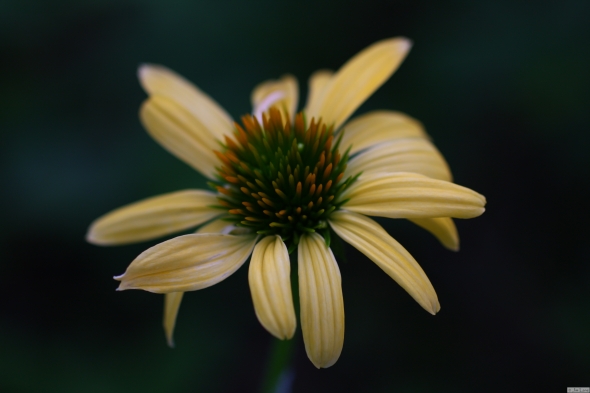
July 11: Yellow Echinacea
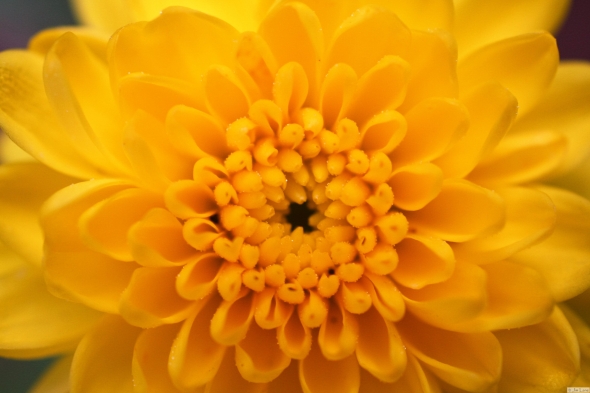
July 11: Mums
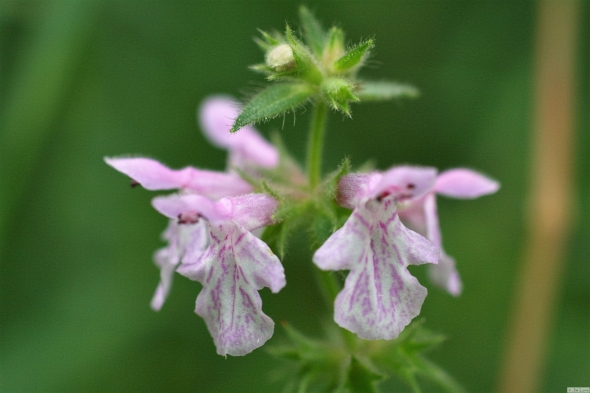
July 11: Woodmint

July 14: Ligularia stenocephala “The Rocket”
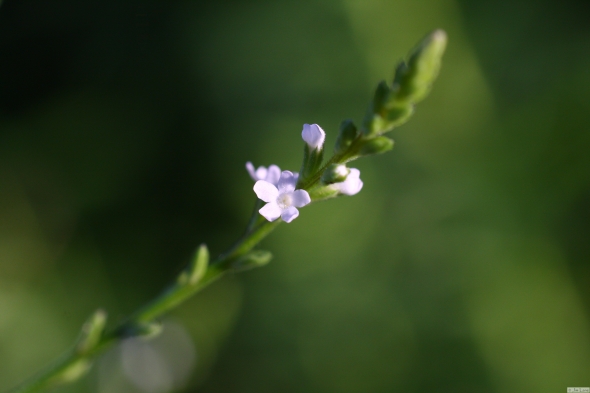
July 15: Smartweed
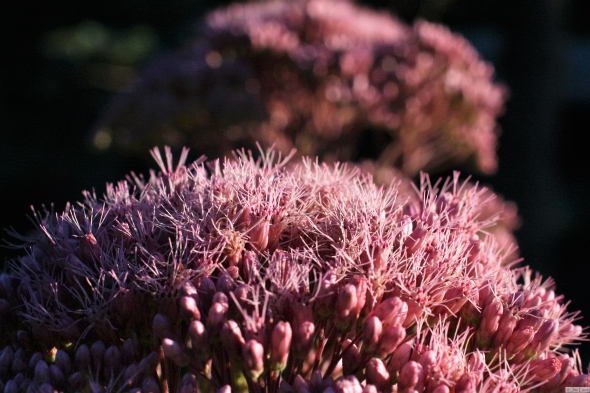
July 15: Joe Pye Weed
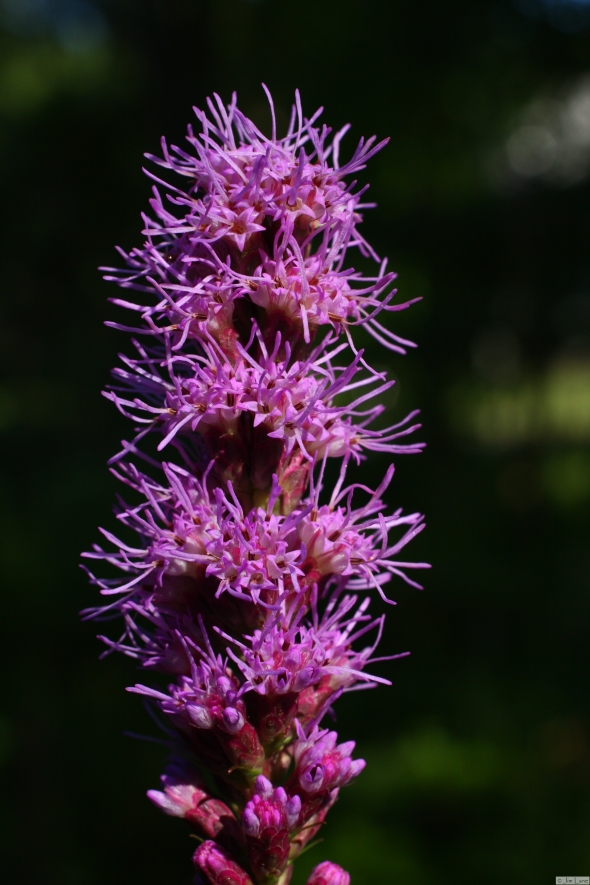
July 17: Liatris
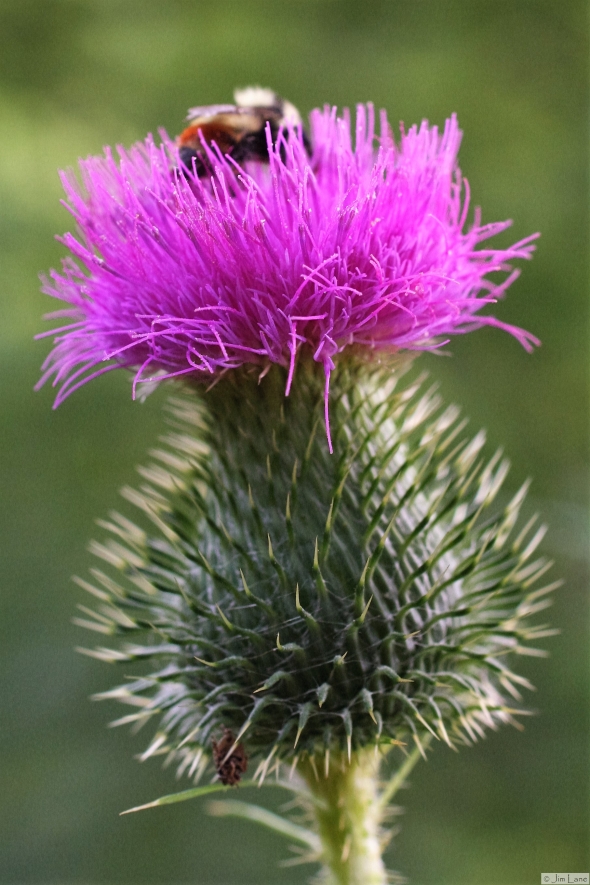
July 19: Bull Thistle
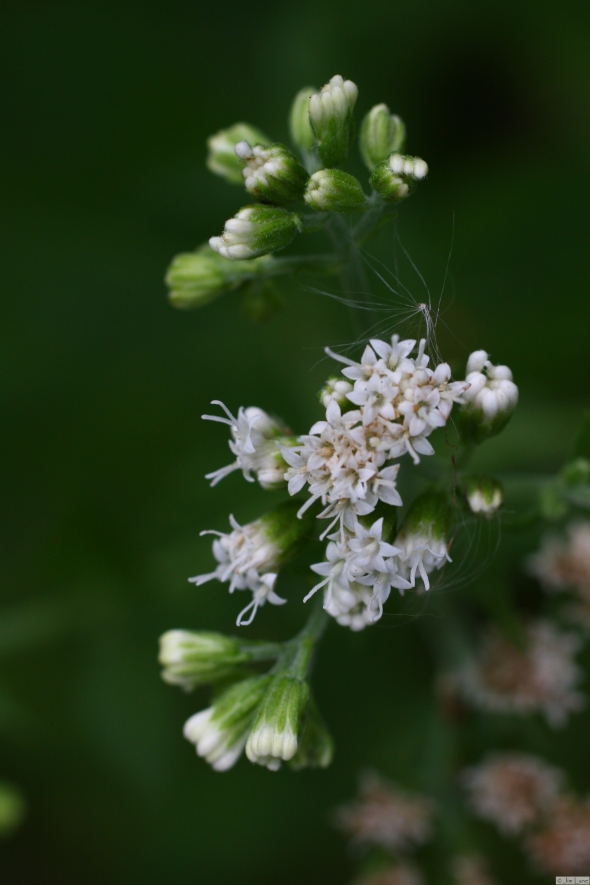
July 19: Pearly Everlasting
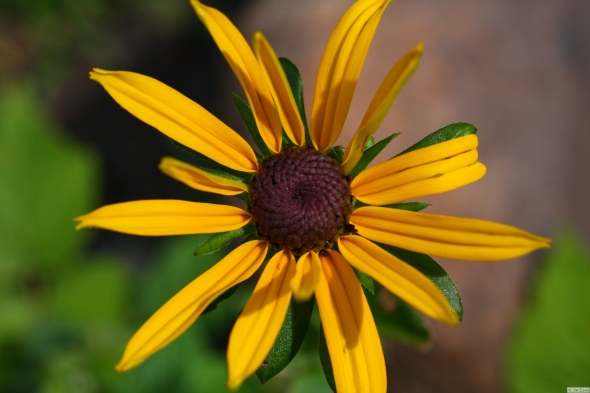
July 19: Brown Eyed Susan
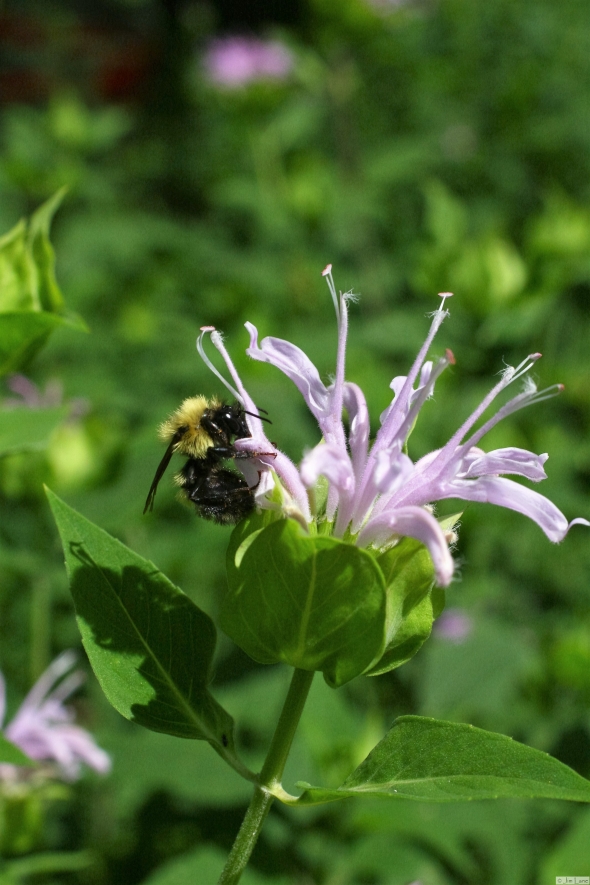
July 19: Bee Balm (native)
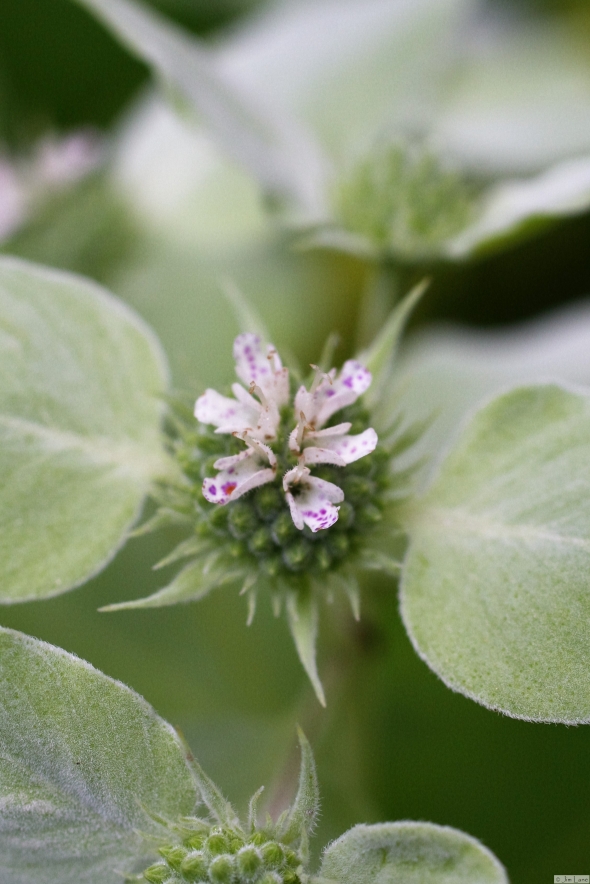
July 19: Mountain Mint
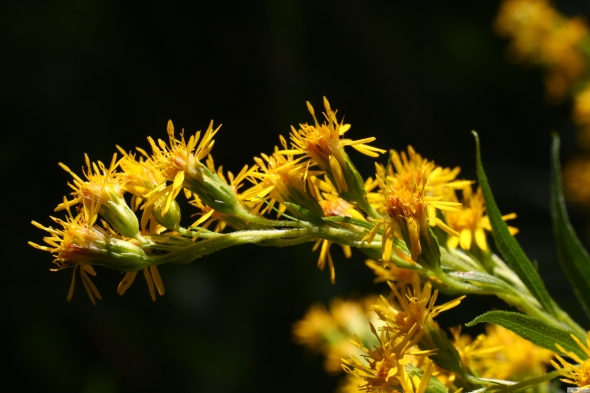
July 22: Goldenrod
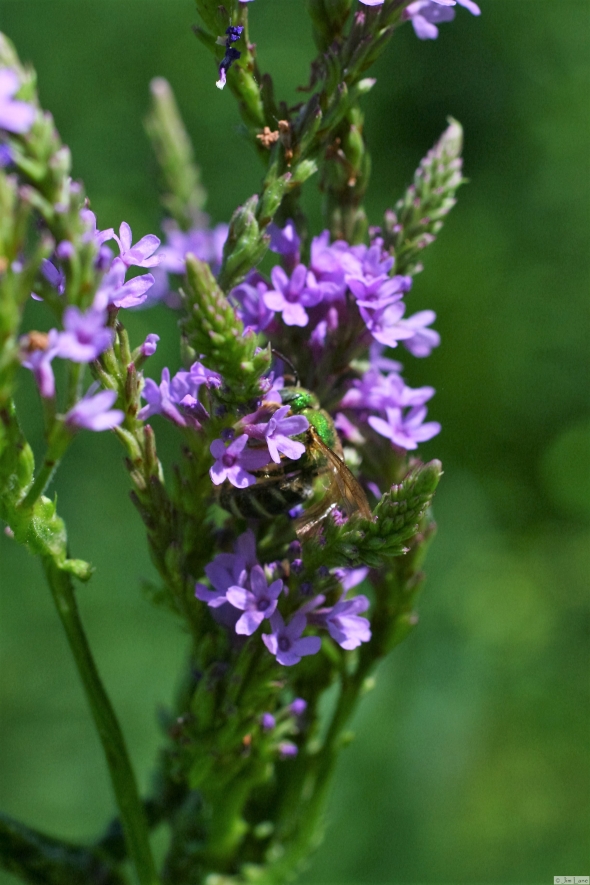
July 22: Vervain
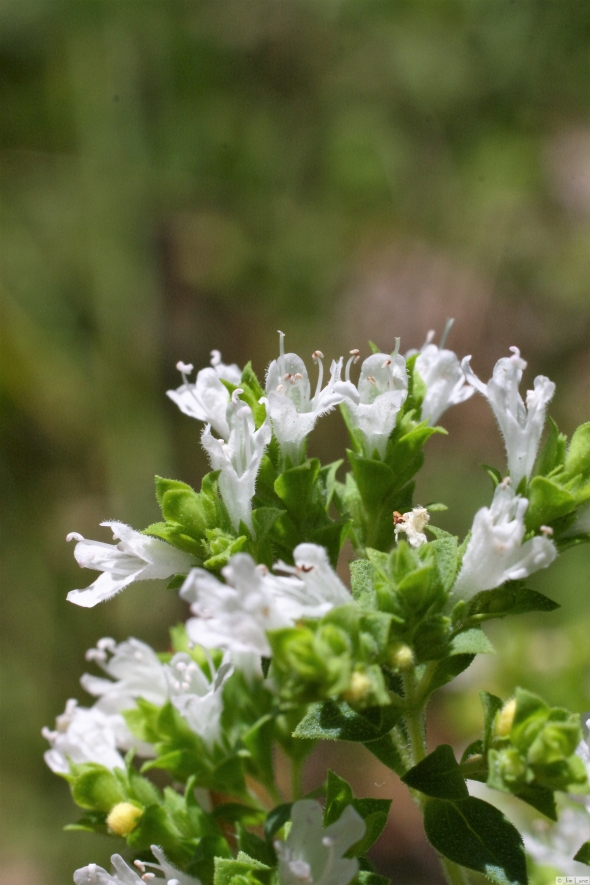
July 22: Oregano
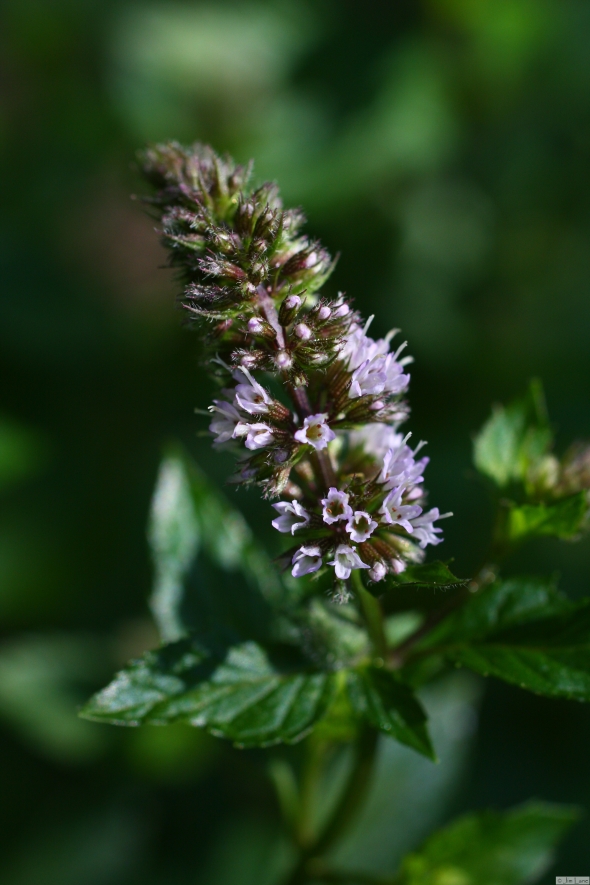
July 22: Peppermint
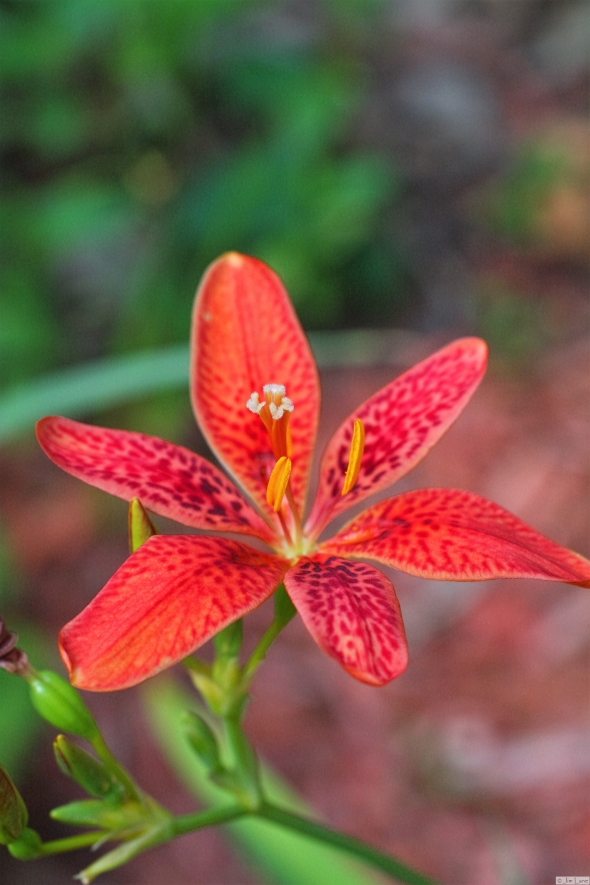
August 1: Leopard Lily (actually in the iris family)
A Year in my Yard: Ditch Weeds and Hitchhikers

When I hear the word “flower” it brings to mind the day lilies, tulips, cone flowers and the other traditional flowers. We tend to think of flowers as objects of beauty rather than the functional sex organs that they are. We look out the window speeding past millions of sex organs, plain as day, in the ditches throughout the world. We even consume the immature sex organs of many different plants (your broccoli will never look the same).
My point is, flowers may seem intricately beautiful as if place here only for our pleasure, when in reality, they serve only to perpetuate the plant species in the most efficient manner possible.
So here are some of those sex organs that we see baring it all on the highway and others who want to get intimately close to you. Enjoy!
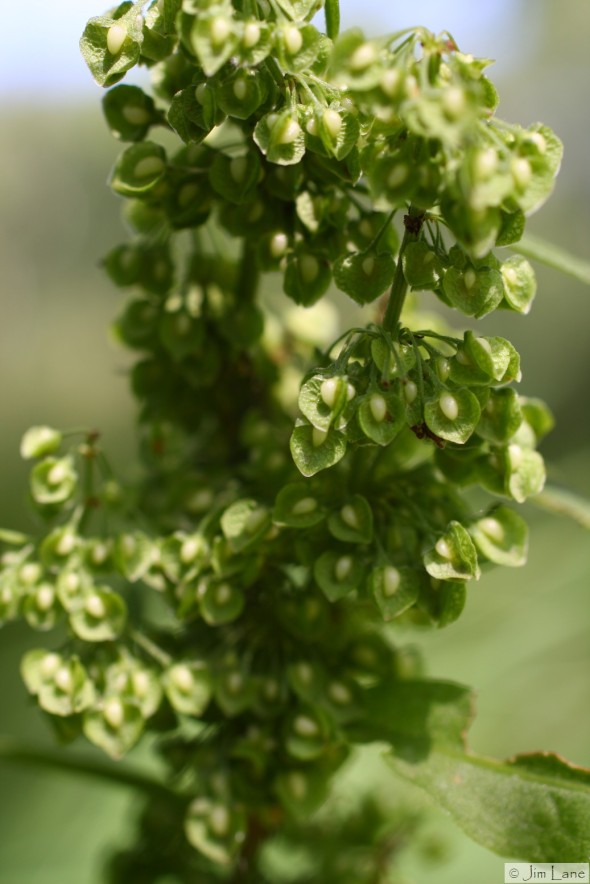
June 21: Curly Dock
Curly dock has these very simple flower head that will turn into a heavy head of dark brown seeds that look almost like tobacco. I see these all over the roads here in Minnesota but have never known exactly what it was.
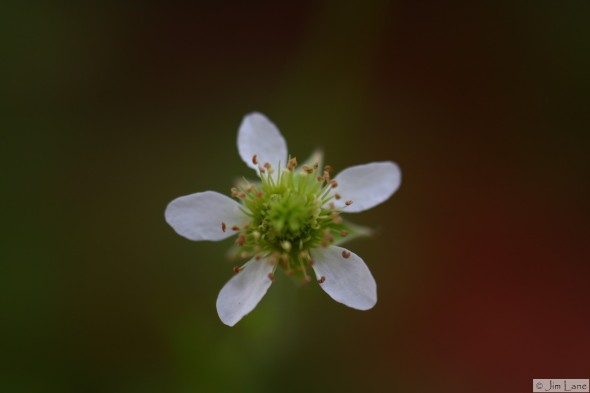
June 29: White Avens
On the road of life, there are hitchhikers. Seeds will do best when they can get away from their parents. This leads to the samaras, or helicopters, on the maples, the light fluff of a dandelion or even the buoyant nature of a coconut. Other plants have a different strategy. The White Avens, pictured above, produces hook like seeds that will attach themselves to any passerby. I found this plant on a well-traveled deer trail in my backyard, quite literally a highway.
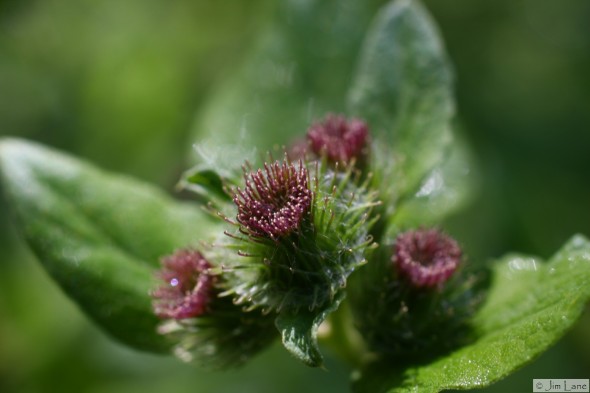
June 30: Burdock
Here is the king of all the plant hitchhikers, the burdock. The little-hooked barbs of the seed are already formed on the flower. These aggressive seeds will create large mats of hair in any mammal unlucky enough to get snagged. I once found coyote tracks on my ice covered pond and you could clearly see where it had stopped and wiggled to remove 6 burdocks from its hindquarters, leaving only the seeds and a little hair behind. An annoyance for the coyote was free transportation for the burdock.
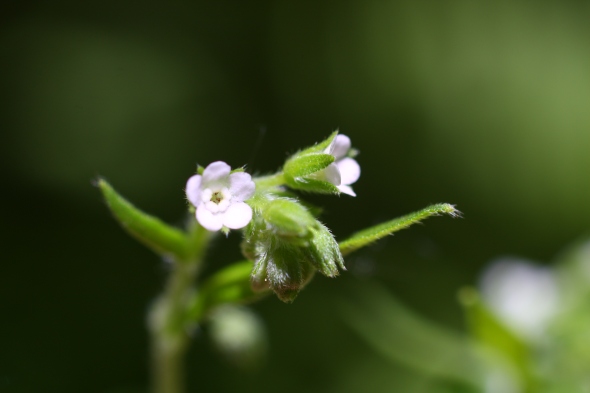
June 30: Virginia Stickseed
This small flower is another hitchhiker with the surname of stickseed (you know it means business). The seeds produced by the stickseed are small sticky burrs. The stem branches are nearly perpendicular to the ground and each branch is covered with tiny sticky seeds ready to hitch a free ride.
Not all plants we commonly see on the side of the road are hitchhikers, some simply take advantage of the good sun and reduce competition from habitual mowing.
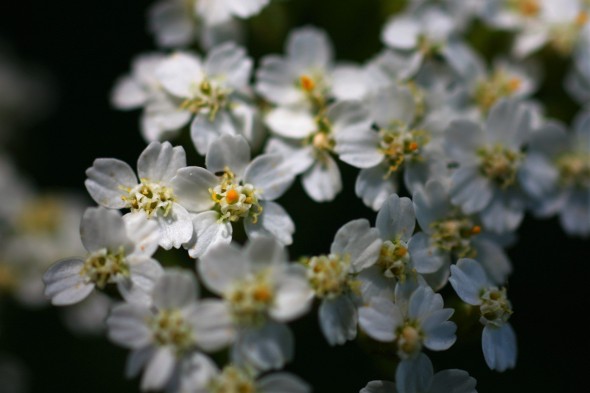
June 30: Yarrow
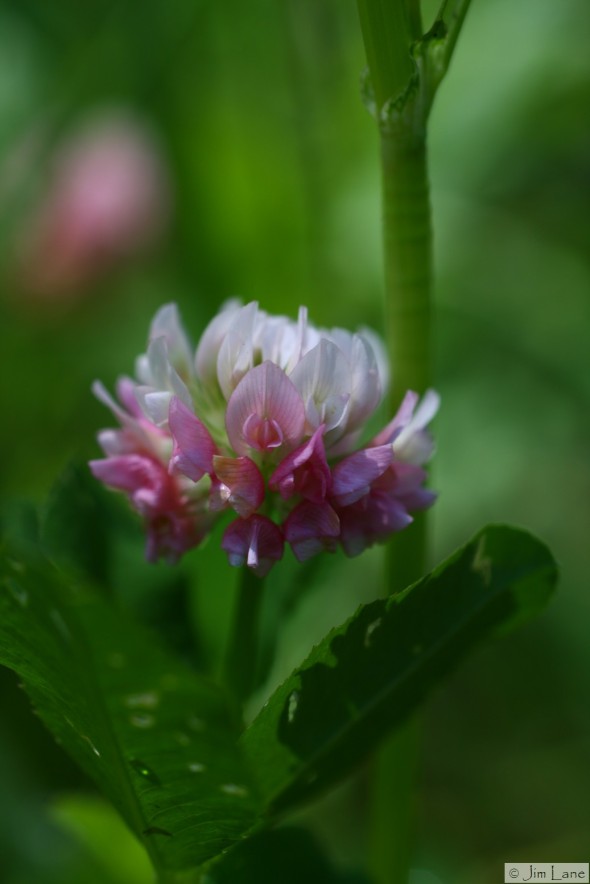
June 30: Pink Clover
Here are two examples of flowers in my yard that are common on roadsides as well. Unlike the hitchhikers these two thrive in the semi-maintained ditches across the Midwest because they offer the right light and reduced competition.
To finish here are a couple more pictures that don’t necessarily fit this theme but still need to be documented for my Year in my Yard project to document all the flowers on my property. Enjoy!
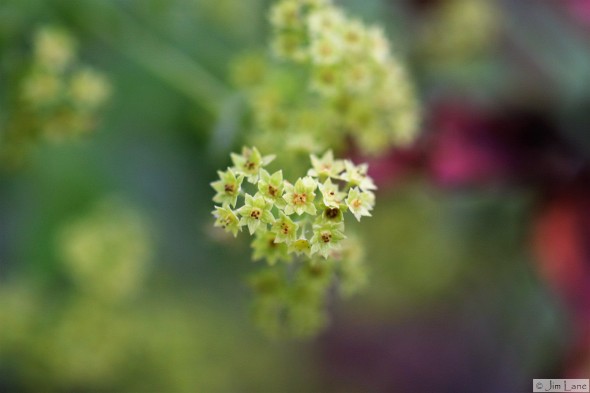
June 29: Lady’s Mantle
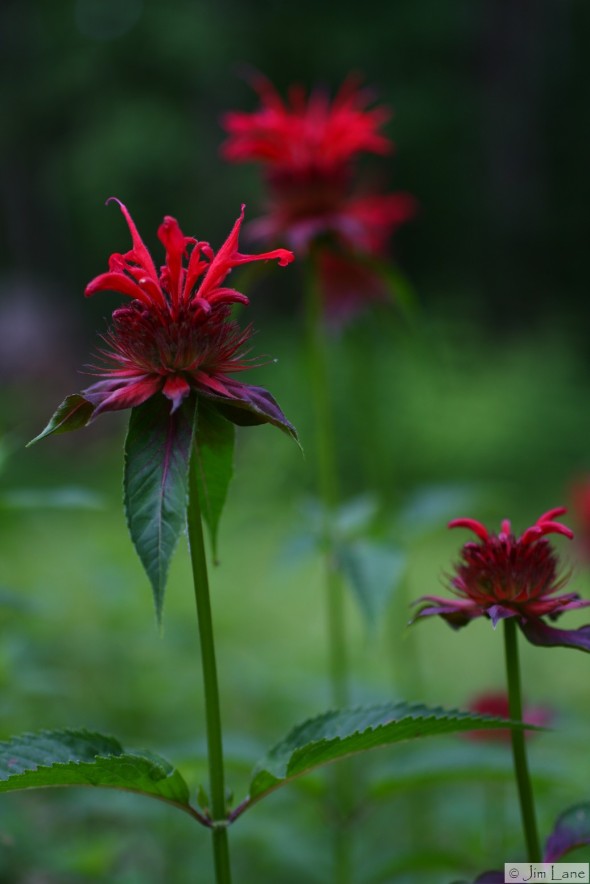
June 29: Bee Balm
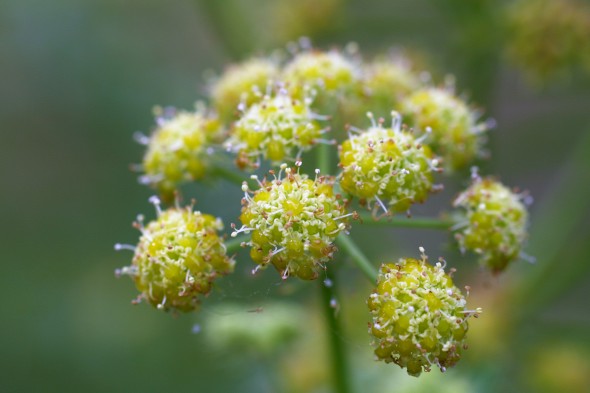
June 29: Golden Alexander
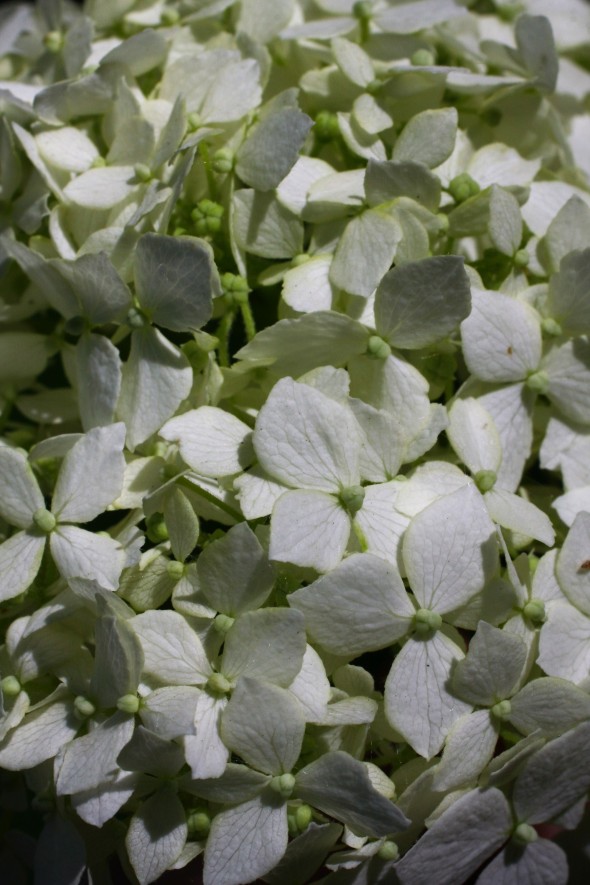
June 30: Hydrangea
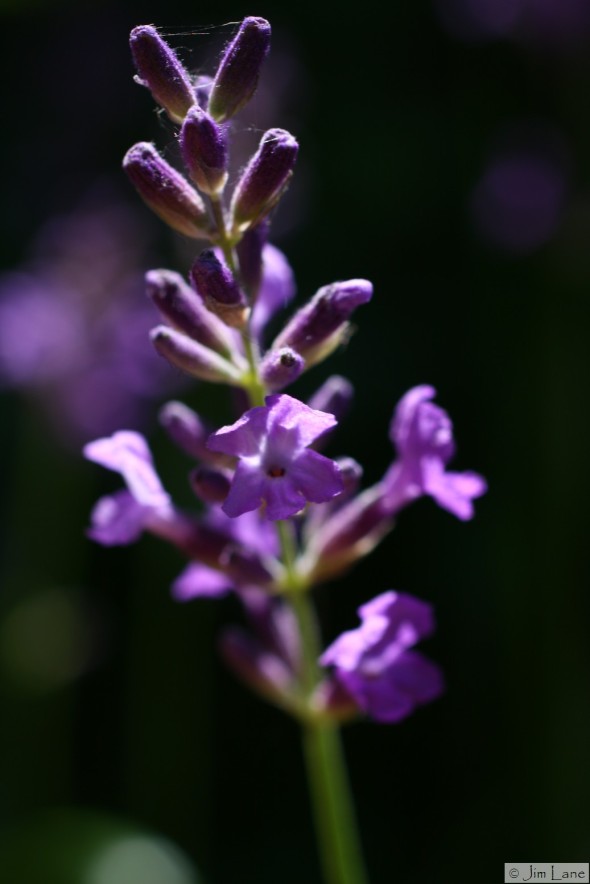
June 30: Sage
Dirty Dancing on the Fly

Sometimes a photo opportunity may come when you are not expecting it or when it is not convenient. I was out taking some photos of flowers for my other project and realized that the local insects had other things on their mind.

A pair of platysomatid flies (Genus Rivellia) were performing a courtship dance on my left ring finger. These odd looking flies are often confused for fruit flies but are their own distinct genus. The description in my Kaufman’s Guide to Insects of North America says their “biology and life histories are essentially unknown”. Well, I can vouch for a bit of their courtship behavior.
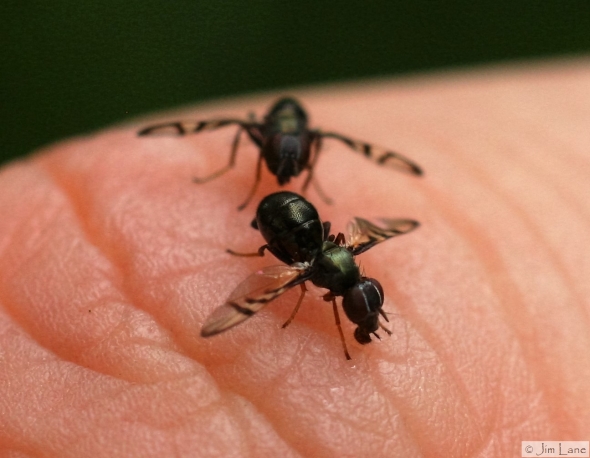
The female fly leads the dance with the male fly mirroring her every step in a close formation directly behind her. Both flies will flip their wings as the dance zigs and zags across the dancefloor, in this case, my finger.
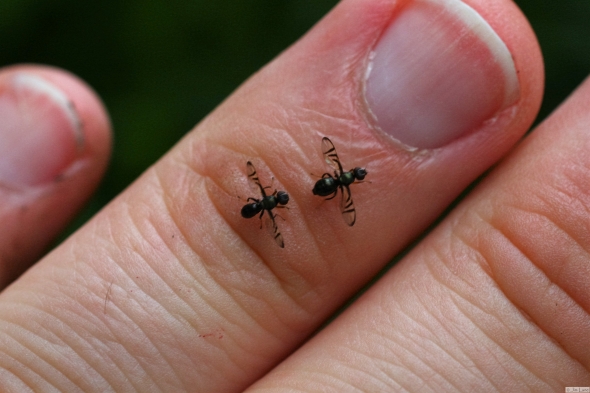
As the dance progresses the male closes the gap making the dance more and more intimate until…
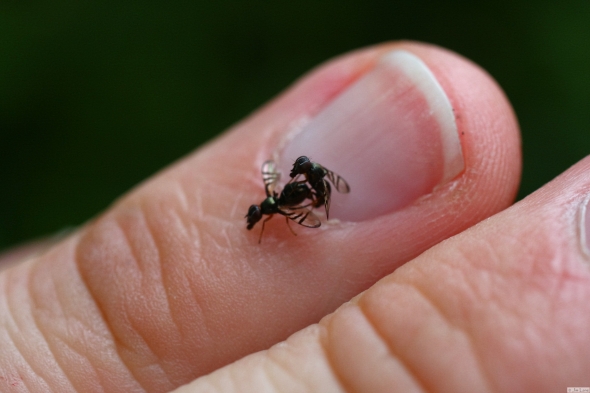
the female pauses for a brief moment allowing the male to mount the female and transfer sperm. (I’m just glad my cuticles look as good as they do!)
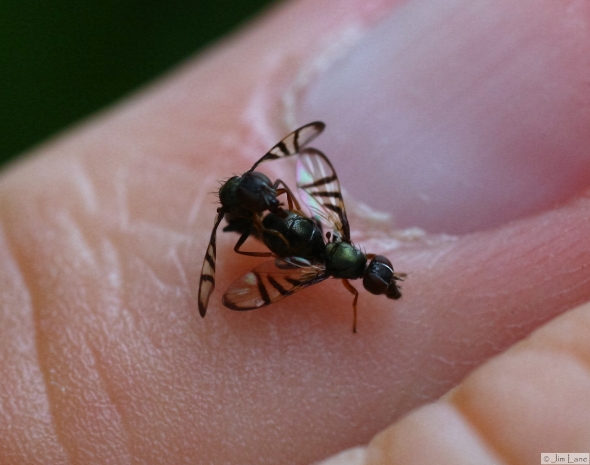
The actual even of mating lasted only a couple of seconds before the male released his grasp.
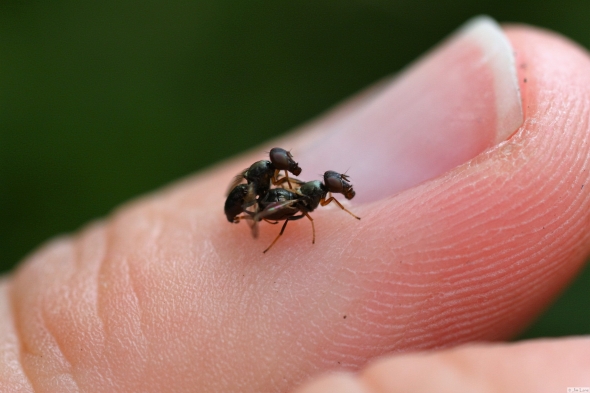
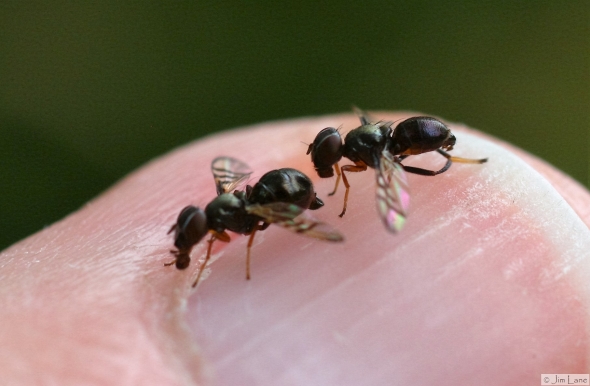
As soon as the act was finished the dance picked up again and the male quickly jumped back into the rhythm of the females lead. I can only assume the mating continued after they flew away from the voyeuristic primate with a camera pointed at them.
Take not of the little things and relish the small beauties and wonders that are, sometimes, literally on your fingertip.
A Year in my Yard: Summer Stars

Summer has set in and the heat and humidity are making it known. The flurry of flowers between spring and early summer have come and gone while the familiar faces of summer are settling in for their turn.
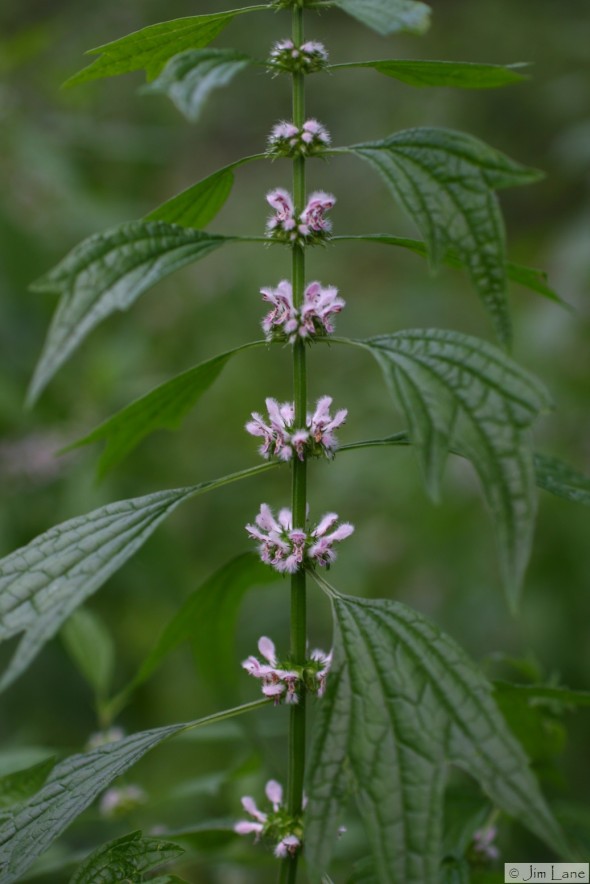
June 21: Motherwort
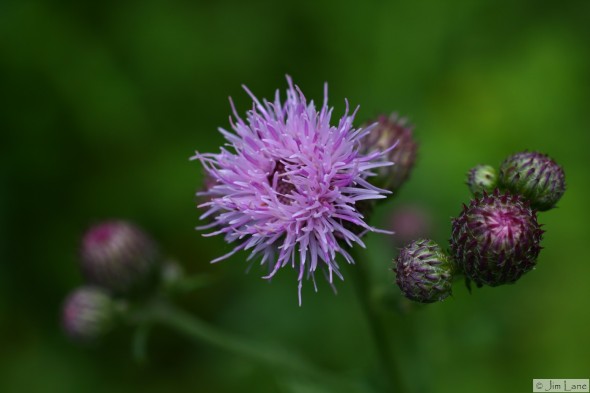
June 21: Canada Thistle
June 21: Common Elderberry
Here is another native that thrives with disturbance. Each of these flowers will become a very edible berry after it is pollinated. The berries are good to eat provided you can beat the birds to them!
June 21-26: Echinacea
Here is one of the masters of the native plants, echinacea, the mighty cone flower. This flower and its allies dominated the native prairies, grasslands and savannahs for thousands of years before the plow. The pictures above are all of the same individual flower, taken over several days. The petals expand and fill with color as they mature. The bees, flies, butterflies and moths were eagerly awaiting the production of nectar, “testing” the flower from the moment it emerged.

June 21: Gaillardia (I think…)

June 26: Pink Lily
June 21: Stinging Nettles
Here is a great example of different strategies flowers use to reproduce. Some flowers like the lily, pictured above, produce one large flower with a large reservoir of nectar and pollen. This single flower can produce multiple seeds. The Gaillardia, also pictured above, is a composite flower meaning that it is actually hundreds of tiny flowers pushed together. Each of these tiny flowers can only produce one seed each, but because they are numerous, one flower head can produce hundreds of tiny seeds. Yet another adaptation is exemplified by the stinging nettles. It too produces a plethora of small flowers but in less organized groups. Each small flower will produce a single seed.
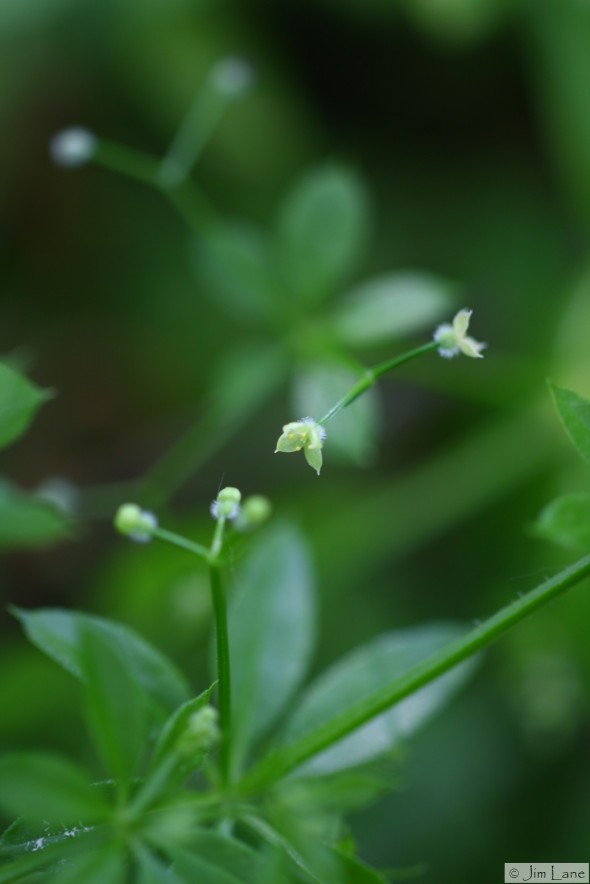
June 26: Bedstraw
This has to be the smallest flower I have seen all year. Each tiny bloom is only a couple of millimeters in diameter. These flowers must surely be pollinated by small flies as anything larger wouldn’t be able to land on the stem let alone access the nectar at the bottom of the flower.
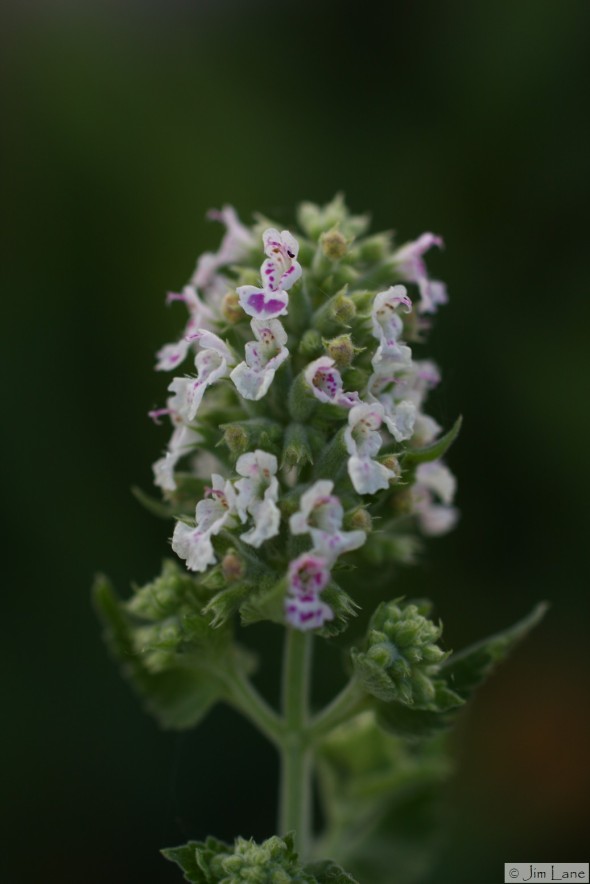
June 26: Catnip
Catnip is in the mint family. The flowers are clustered radially around the square stem. I have other members of the mint family coming in a future post so make a note to compare the flower shape, color, and patterns!
Is there another flower in this post that’s in the mint family? Go back and see if you can figure it out!!
Death of a Chickadee
With spring comes rebirth and revitalization. Spring is also a time of death. All the new life requires energy. For many animals that energy comes from the young and vulnerable. Every year I welcome spring by watching the chickadees and other birds begin building their nests. I have several nest boxes around my property that have yielded dozens of broods of wrens, chickadees, and bluebirds. See my post documenting a brood of chickadees here.
This year the chickadees built their nest of hair, lichens and moss in a nest box I inherited from my grandparents. I watched as they diligently shuttled all the nest materials into the box. We would periodically lift the top of the box to check on the progress of the nest. Sometimes the female would allow the minor disturbance and would not leave her incubation of 7 tiny eggs.
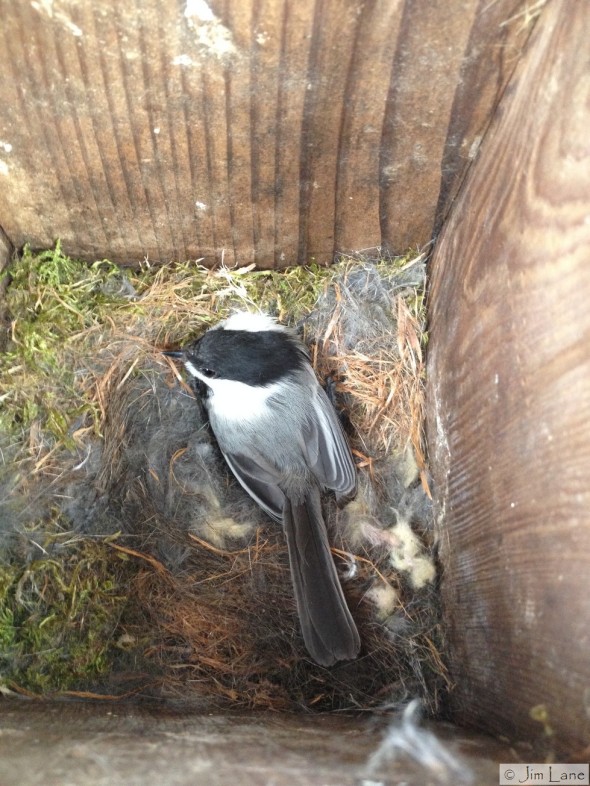
All was going well until I noticed some clumps of lichen and hair outside the nest box. My heart sank and I knew this was not good. Opening the box I found the nest in disarray. The eggs had been moved but were still intact. The female was no were to be found.
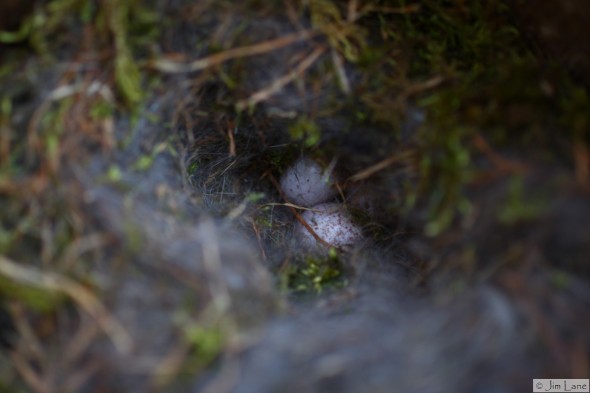
The hole to enter the nest box had evidence of recent scratching and nest material being removed.
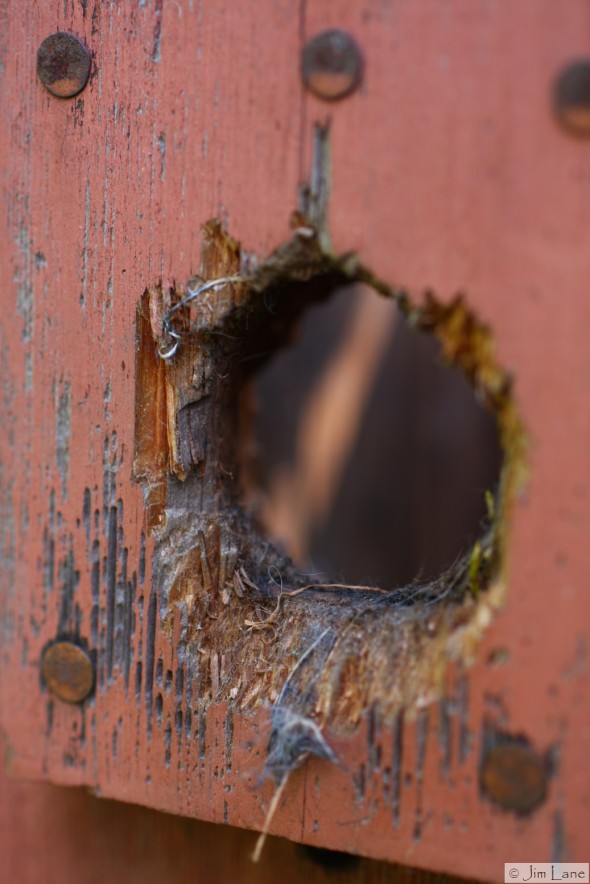
Directly below the nest box I found the evidence I was hoping not to find. Evidence of predation, the right wing of a chickadee. The feathers were mangled and disheveled hallmarks of a bird predated by a salivating mammal, most likely a raccoon. Smaller body feather littered the grass around the wing.
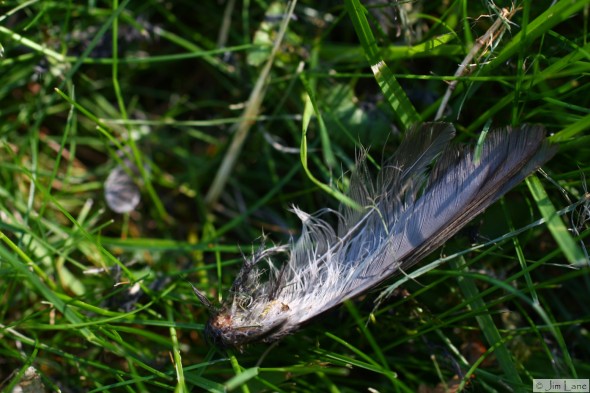
All hope for the survival of the eggs had been lost. Seven little chickadees that will never see the sun or herald in the spring with their phee-bee call. Their mother plucked from the nest as she warmed them on a cold spring night to meet her fate in the belly of a raccoon.
When explaining this to my 5-year-old daughter it was difficult for her to process. I could tell she wanted to be angry at the raccoon and mourned the loss of “our” chickadees. But without the sacrifice of the chickadees, the raccoon could not feed their own young. The raccoon knows not of right and wrong only of survival and the next opportunity for food.
Out of curiosity, I removed one of the eggs from the failed nest.
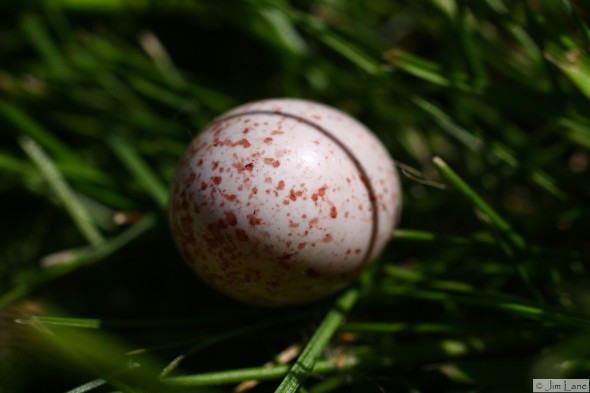
I carefully removed the eggshell to reveal the fully formed chickadee embryo inside, probably just days from hatching. The tiny feet curled up into the fetal position
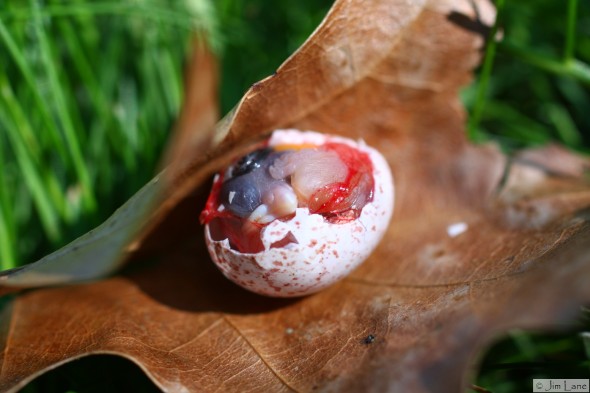
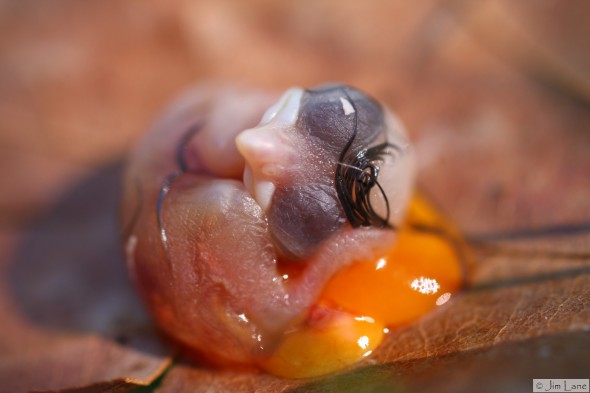
The somber emotion of this picture defines the dichotomy of spring. It is a time of rebirth through death. This cycle is essential for the survival of all species. Without death, there cannot be life.
A Year in My Yard: Lessons in Gambling
I have challenged myself to document and report all of the flowering plants on my property for they year. I will be sharing my findings as they happen throughout the flowering season.
Spring in Minnesota is full of extremes as the weather seems to go through mood swings, personalities and extremes all within several weeks. This spring started very early with nearly a week of very above normal temperatures. But in true spring fashion, the warmth was short=lived and the cold returned for several weeks. For us humans this is not a big deal as we just have to put on the winter jacket again and wait out the cold. But plants have much more at stake.
Each spring plants play the odds for when to withdraw from their energy reserves and begin to produce leaves and flowers. Those who bud out too soon risk losing their investment with late frosts. Those who bud out too late miss out on valuable solar energy to capture.
Plants also risk missing their pollinators if they bloom at the wrong time. Many plants rely on insects to transfer pollen from one flower to another increasing genetic diversity within the population and producing the next generation of the species. Because of climate change we are now witnessing an upset in some of these relationships. Some species of plants are blooming before their pollinators are present. This may not seem like a big deal but the very survival of some species is on the line.
And now here are some of those early gamblers:
April 2, 2016
Slippery Elm, Ulmus rubra
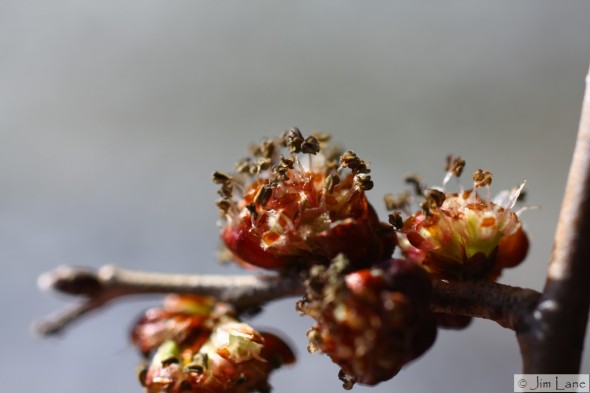
These small flowers have been nipped by the frost. Notice the wilting on the stamen and the damage to the bud scales. This tree took a hit but I think the gamble ultimately paid off. This is a tree species that I did not realize I had on my property and was a new one to identify as well!
April 14, 2016
Crocus, Crocus sativus
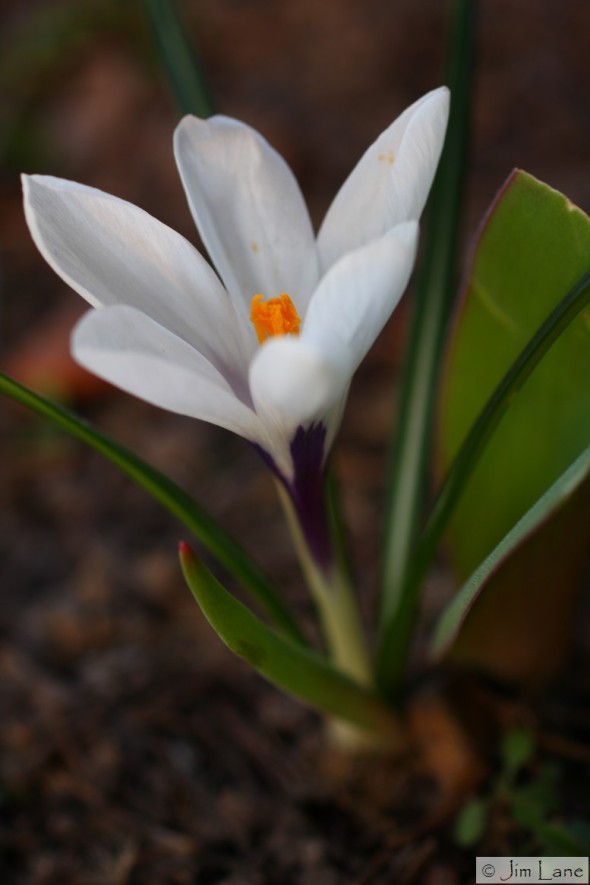
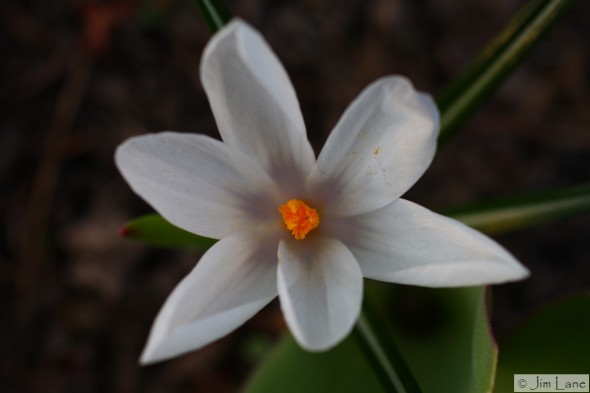
April 16, 2016
Pussy Willow, Salix discolor
Here is an example of how one species prevents self-fertilization. The first picture is the flower bud taken on March 26, 2016. The second and third pictures are from two different trees. The second picture is the male stage of the flower with the flamboyant male stamen spreading their pollen. In the third picture, the stamen have wilted and the female stigma has matured to receive pollen from another tree.
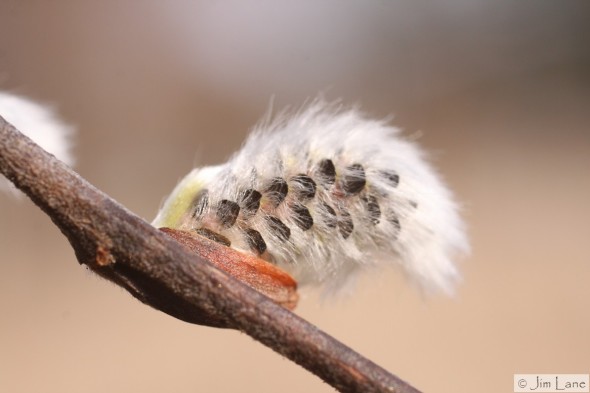
Flower bud
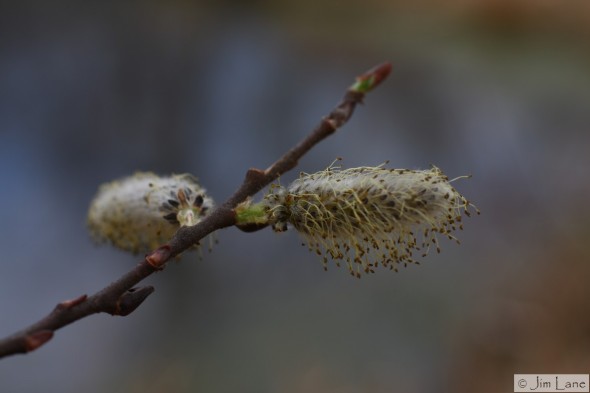
Male flowers. Not the long stamen with pollen heads on the end.
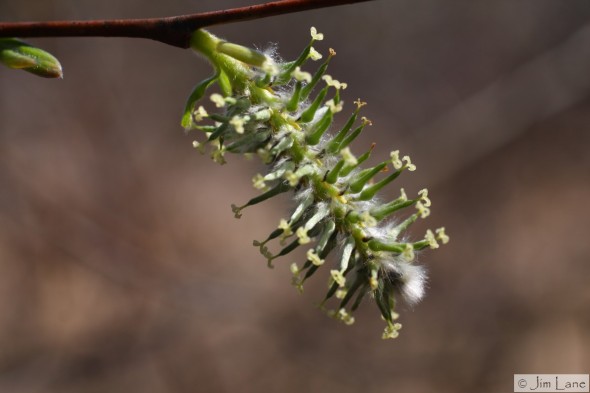
Female flower. Note the yellow stigma on the ends.
Boxelder, Acer negundo
Boxelder trees are short lived, water loving members of the maple family. They produce samaras (the helicopter seeds) like other maples. Growing up my favorite climbing tree was a boxelder.
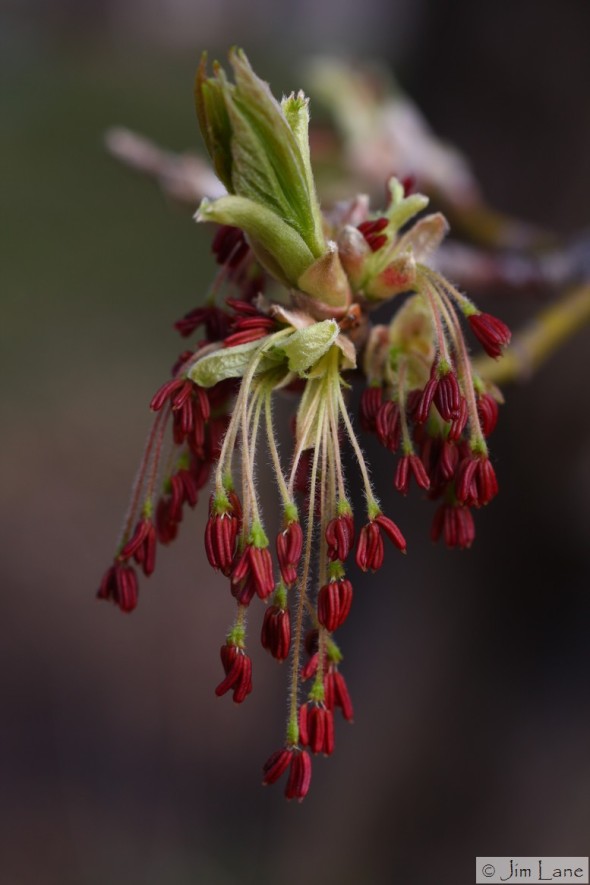
Boxelder flower
Eastern Cottonwood, Populus deltoides
I have a love-hate relationship with cottonwoods. Their rapid and impressive growth make 50-year-old cottonwoods look like giants compared to other species 3 times their age. Because they are a member of the Poplar family they have very soft wood and will often drop branches or limbs during storms. As the name suggests they also produce cotton that will infiltrate every crack and crevice around the house, cars,and your own body. The yellow bud scales that protected the flower before it bloomed are quite sticky and will readily be tracked through the house on my feet, socks and shoes. I always seem to find them stuck in places well after the flowers have finished blooming.
Siberian Squill, Scilla siberica
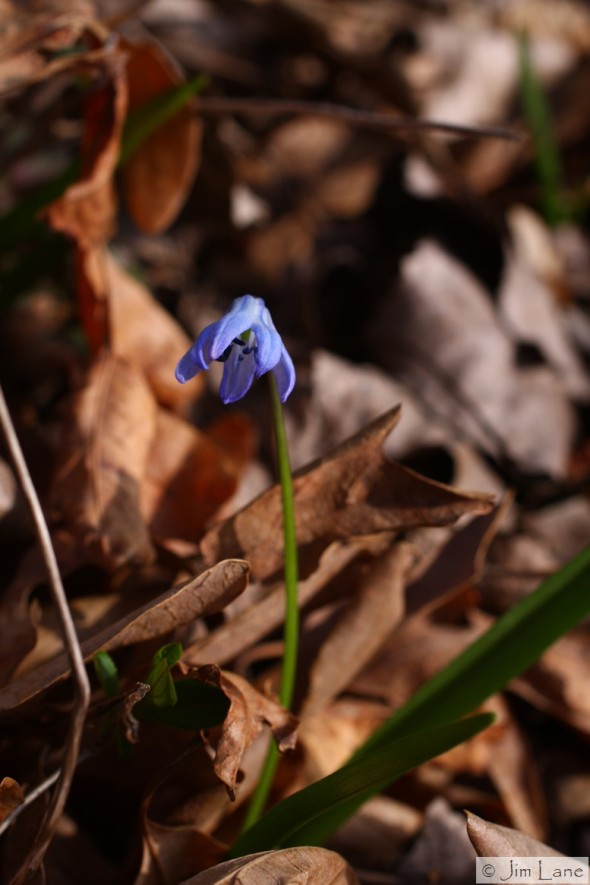
Ground Ivy, Glechoma hederacea
Ground Ivy, commonly called Creeping Charlie, is a very common weed in many yards and lawns. Despite its negative reputation as a weed, this plant serves as an important early spring food source for many insects. The trumpet-shaped flowers are a product of coevolution with the insects that pollinate them. The shape forces the insect to enter the flower to access the nectar deep in the trumpet. In doing so the insect becomes covered with pollen, which is then transferred to another flower. Flowers are, for all intents and purposes, billboards for insects. They are advertisements that have evolved in response to pollinators. Each flower is adapted to a specific set of pollinators and each pollinator is adapted to a specific set of flowers. Which bears the question which came first?
The gamble of making energy demanding flowers is the dependence on the pollinator to complete the act of pollination. Without the pollinators, the plants would not be able to reproduce. This subtle relationship is often taken for granted but our very existence depends on it.
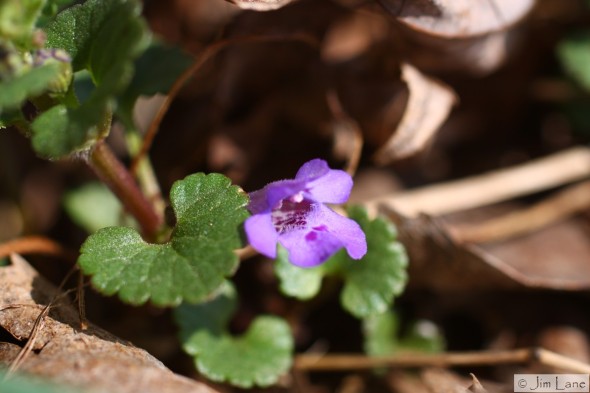
I have two more flowers I have yet to identify. New post coming soon!
A Year in My Yard
It has been a very long time since I last posted. Raising children, moving jobs and houses is demanding in its own right. Last summer, in a moment of humility, I realized I there were plants on my property that I couldn’t name or even identify. In this moment I gave myself a challenge to photograph and document every flowering plant on my modest 4 acres. This challenge will give me an opportunity to better understand and connect with the land and improve my understanding of the plants in the place I call home.
SO here we go. I’m going to post as the flowers pop and try to keep up!
March 22, 2016
Silver Maple (Acer saccharinum)
The Silver Maple is a very common tree in southern Minnesota. It is native to the floodplains and basins of the great rivers where it thrives in the sandy moist soil. It’s rapid growth rate made it an ideal tree for yards and developments and today we see them in many more places than their native habitat.
The photo below is the the female flowers of the Silver Maple tree. The long red protrusions are the stigma of the flower each awaiting a single grain of pollen. Once the stigma absorbs a pollen grain from a male flower it will develop into a seed. Come summer each of these seeds will come whirling down as a samara or as my daughter calls them “helicopters”
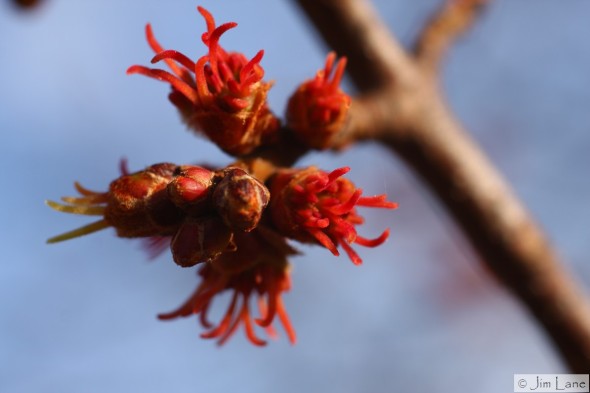
The male flowers illustrated below have long pollen covered stamen that allow any passing breeze to release the pollen in the hopes of connecting with a stigma of another Silver Maple.
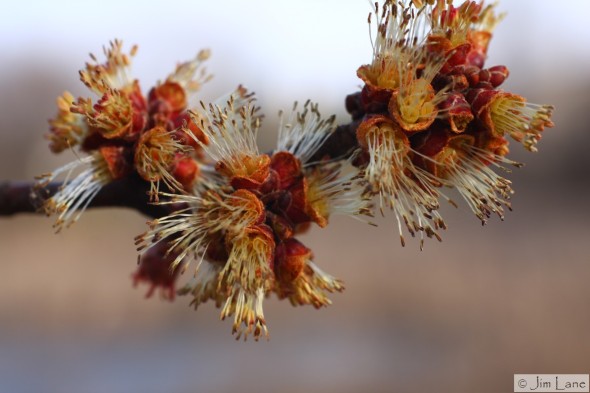
In many species of plants the flowers will start off in one sex and then morph to the other to prevent self fertilization. This adaptation maximizes the chances of cross pollination between individuals and thus adding genetic variation to the population.
Quaking Aspen (Populus tremuloides)
My property has many many aspen trees. These soft wooded trees can reproduce in several ways. They have the traditional sexual reproduction using flowers, called catkins, pollinated by the wind but they can also clone themselves. Cloning occurs when the roots from an adult tree spread to a neighboring area and sprout as a tree. In the mountains of Colorado there are vast forests of aspen trees comprised of only a few individual actual trees, making them one of the largest single living organisms all connected through a maze of roots.
My students often find these “caterpillars” on the ground in the spring. What they have actually found is the reproductive organs of the aspen, a catkin. These unique looking flowers are often one of the first signs of spring. Their fuzzy appearance helps catch the slightest breeze sending a load of pollen to the sky.
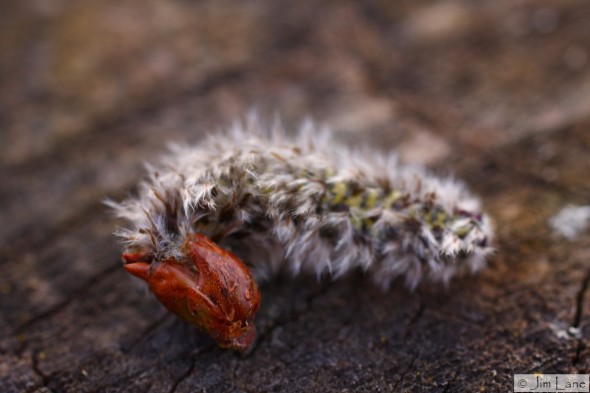
Note the yellow pollen on my hand in the picture below.
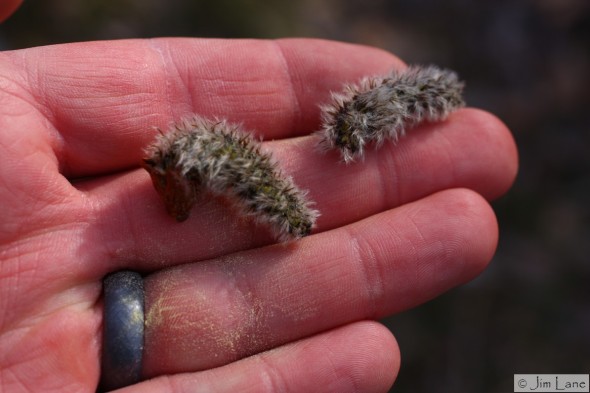
Snow Drop (Galanthus sp.)
This is the first non-tree flower of the year. As the common name suggests the Snow Drop can often be in full bloom even with snow still on the ground. The day after I took the picture below we had several inches of snow. These and other flowers are an important early season pollen resource for bees and other pollinators. The Snow Drop lays dormant for nearly 10 months a year as a bulb. The bulb stores all the energy the plant needs to push through the soil, produce leaves, and flower. After a short month or so above ground the plant will once again retreat below ground to wait for the following spring.

That’s all for now. I’m anxiously waiting for the boxelder, cottonwood, and a tree that I’m not sure of to pop! I also have tulips, daffodils and iris poking through the soil, not to mention the ground ivy or creeping Charlie that will be flowering soon too!!




